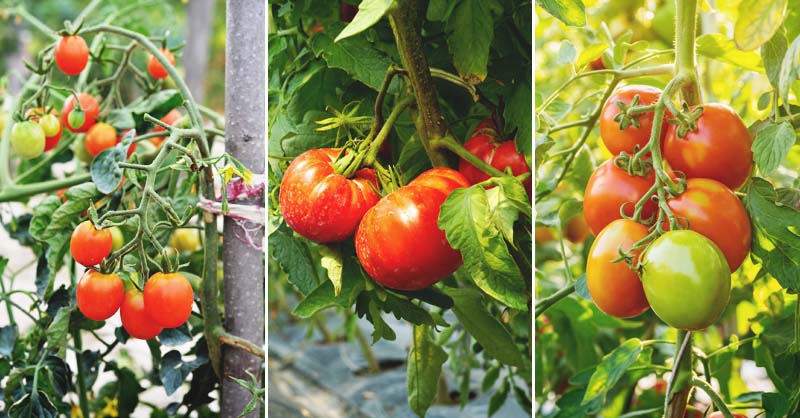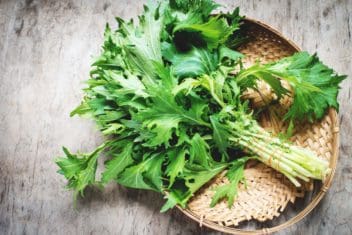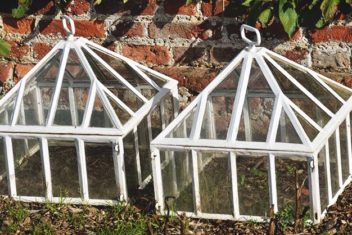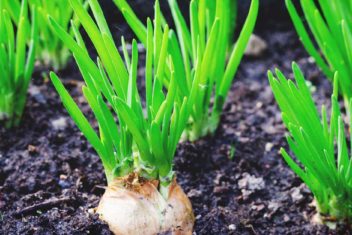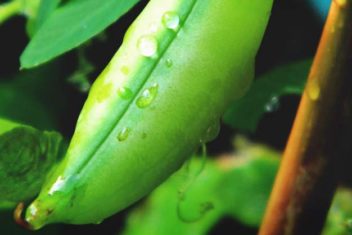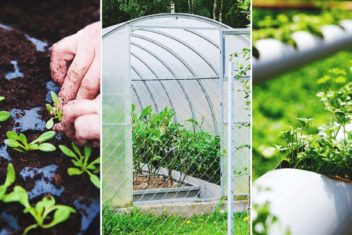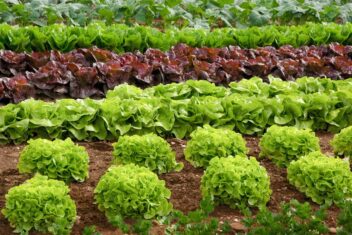I’m obsessed with growing perfect tomatoes. In a good year, my plants can get enormous and be weighed down with an abundance of fruit. One of the secrets to my success is properly staking my tomatoes.
If you don’t stake your tomato plants the right way, you risk branches breaking or the entire plant tipping over and even snapping off at the stem. Not only that, but your tomatoes will rot if they lay unsupported on the ground, and critters will have an easy meal.
If you’re like me, you don’t want to lose a single one of those beautiful fruits that you’ve worked so hard to grow, so let’s get started on learning how you should be staking your tomatoes.
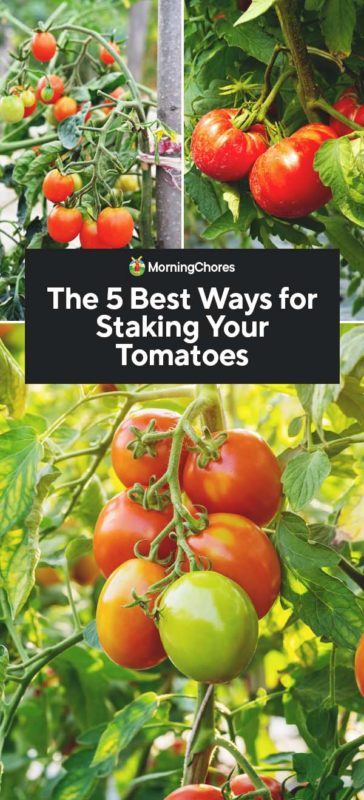
Types of Tomatoes
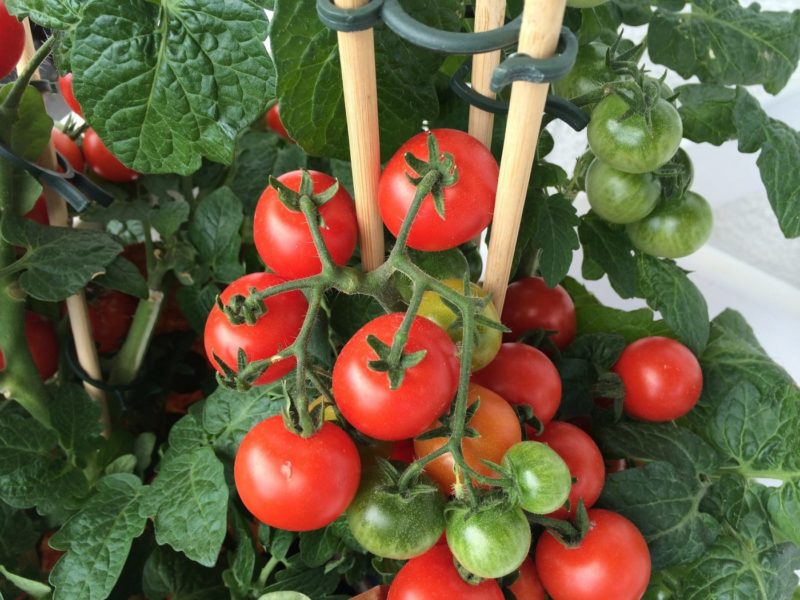
There are two main types of tomatoes, and you should understand the difference before you get staking. Some people don’t stake determinate varieties, while others think its a must. Let’s look at the differences to understand why you may want be staking your tomatoes, regardless of the type.
Determinate
Determinate tomatoes will grow to a defined height and set all their fruit at once, typically early in the year. For this reason, some people skip the support structure.
That said, I stake my determinate plants. You want your plants well supported, especially when the wind picks up, because if you have a good season your tomato plants will have to hold a lot of fruit. If they don’t have support, they could end up on the ground or the fruit may break off.
I use small, thin stakes for determinate plants because it’s easier to predict the size and strength you need with determinate tomatoes.
Indeterminate
Indeterminate tomatoes continue to grow all season and can become massive and heavy. They produce fruit throughout the season, which enables you to pick as the fruit ripens.
You can control the growth by training, removing laterals, and pinching out the main stem; but the moment you stop, the plant continues to grow and get more substantial. Because of this, sturdy staking is a necessity.
Staking Methods
There are a number of methods of staking tomatoes. Here are the most common ones and when to use them.
Single Stake Method
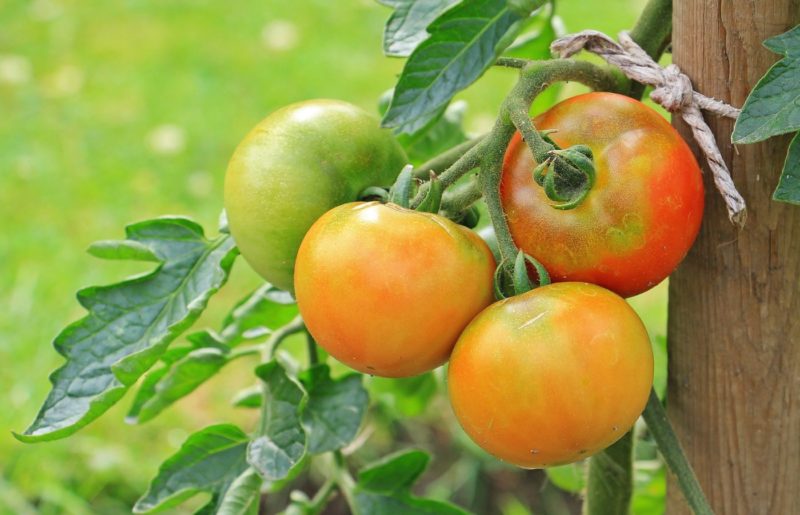
I prefer single staking for both determinate and indeterminate tomatoes when I only have a few tomato plants. This method requires one stake for each plant. The bigger the plant, the stronger the stake needs to be.
I lost many plants in my early growing experience by using stakes that were too thin to hold a fully laden indeterminate tomato. If you have a few busy weeks away from the garden, the tomato plants can grow amazingly heavy when you don’t have time to control the laterals and other growth.
How to Single Stake Tomatoes
Dig in a strong stake next to your young tomato plant. You want to aim to bury 1/3 of the length of the stake. Some gardeners would say that’s overkill, but I’ve grown some heavy tomatoes that fell over, taking the stake with them, because they weren’t far enough into the ground.
After sinking your stake, tie the plant stem to it as it grows using nylon stocking or cotton cloth. Add more ties as the plant grows, taking care not to restrict the plant and cut off the stem.
Don’t wait for the plant to get too big to start staking, or you may damage the roots when pushing the stake in. In the spring, I have tiny tomato plants with a huge stake next to them because I’m prepared for how large they’ll grow.
For small determinate tomatoes and cherry tomatoes, a bamboo stake is fine. For indeterminate tomatoes, use a thick wooden pole, straight branch, metal T-bar or similar. You want a stick about 6-feet tall for indeterminate tomatoes.
Staking in Pots
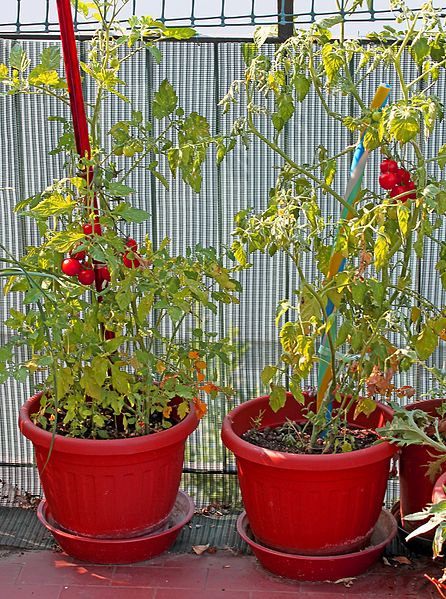
Even small varieties need to be staked in pots. If you have a shallow container, use two or three stakes to share the load. If you have a nice deep pot, one substantial stake will work well.
Weave Method (Florida Weave)
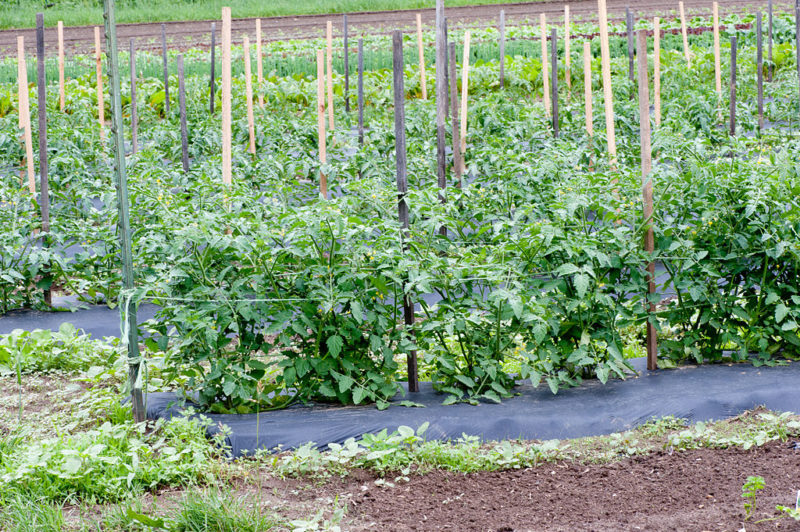
This is the method I use to stake tomatoes when I have a large number of plants because I don’t have to do one stake per plant. You do need to have strong stakes, though, because each stake is supporting multiple plants.
How to Use the Weave Method
Plant your tomatoes in a long straight line. Hammer stakes into the ground, with a tomato plant in between each stake.
Once the plants get about 9-inches tall, tie a string to the first stake at the beginning of the row about 6-inches above the ground and pull the string in a loop around the next stake. Continue this down the entire row, keeping the string taut the entire time.
Tie the string securely to the last stake and then return down the line again with the same process. Tie off at the original stake. The string holds the plants, supported by the stakes in the line. Add new rows of string as the plants get taller.
I’ve found this to be the best option when I’ve planted a lot of tomato plants because it requires fewer supplies and I can get nice straight rows, which gives me good airflow through the garden.
Tomato Cages
I only use caging with cherry tomatoes in pots. It’s a quick-and-easy method that works well for container tomatoes. In the ground, I find it to be more expensive and less reliable than other methods.
You can buy wire cages at most home improvement stores. Cages can be cone-shaped, round, and open at the top, or square. Beware that some cages can be flimsy. The sturdier, better-made ones can be expensive, but you can re-use them year after year.
You can also make a cage by sinking three stakes around the plant and attach wire netting, plastic netting, fence wire or string.
Using Tomato Cages
To use, lower the cage over the plant, ensuring the stem is in the center. Secure the cone to the ground with a stake to improve the support for the plant. Tie the plant to the cage as it grows.
Vertical String Method
You often see the vertical string method in greenhouses, especially in big production growers. This is the best method if you want to make the most of limited space.
How to Use the Vertical String Method
Buy or build a sturdy frame over your tomato plants. This can be as simple as a rough bamboo frame or you can also use something as elaborate as a wood or metal structure that provides support for the strings that the plants will be attached to.
Tie a cotton string, wire or nylon cord to the top of the frame and pull it taut to the ground. Secure the string with a stake or heavy support like a piece of wood or wire secured to the ground. Now, the tomato plant can be tied to the string as it grows, just like a stake.
I’ve tried this method both in and out of the glasshouse and was only successful when I had a sturdy frame at the top and bottom, so be sure your structure can handle the burden.
Trellis Method
I have used trellis before and find it a useful method for growing tomato plants into bushy shapes. I’ve achieved this by growing the plant up the trellis, attaching it with string and not removing the laterals as they grow.
Trellis-Growing Tomatoes
Buy or make a trellis and sink it deep into the ground, 3-5 inches next to the tomato plant. Like a stake, the trellis needs to be as deep as you can manage. Trellises work in the ground or container plants.
Tie the sturdier branches of the tomato to the trellis as it grows, taking care to remove older ties over time if the branches get too thick.
For extra support, the trellis should be secured to strong poles at each end like T-Bar. Be aware that if you don’t remove the lateral branches and excess growth, the plant will become heavy. You also limit the amount of airflow if you don’t prune your plant.
What to Use to Tie The Plant
I always use twine or string, but you can use anything soft. You can also buy tomato clips. These are specially designed to attach your plant to the stake. Old pantyhose work well, but they do become weak in the weather. Avoid using wire as a tie because it can cut into the stem of the plant.
Remember that tomatoes need strong, solid stakes. I’ve lost many plants by underestimating the size the plant will grow to, the weight of the fruit and the effect wind has on a fully grown tomato plant. Good luck and if you have any neat ideas on staking tomato plants, we’d love to hear from you!

